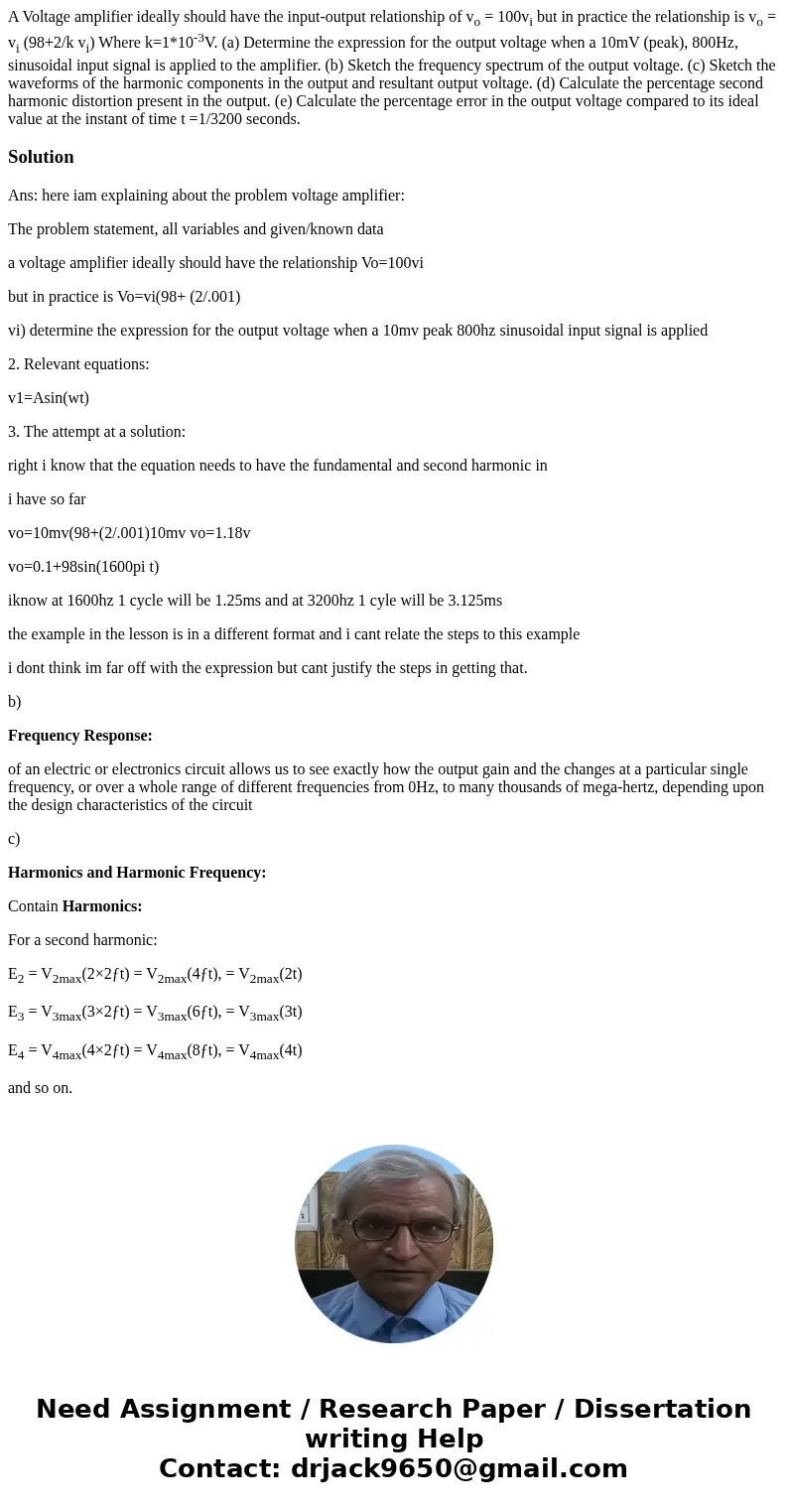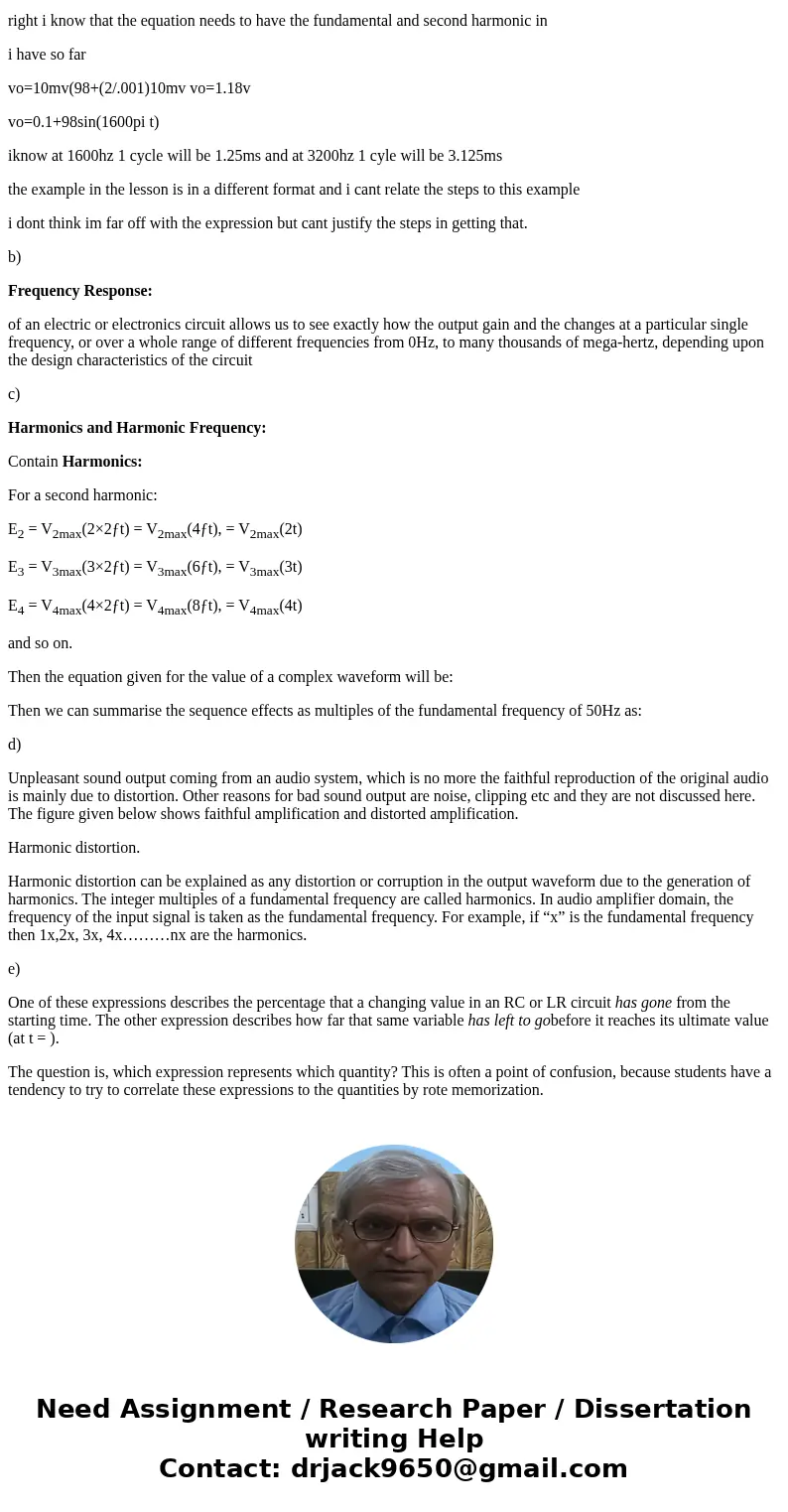A Voltage amplifier ideally should have the inputoutput rela
A Voltage amplifier ideally should have the input-output relationship of vo = 100vi but in practice the relationship is vo = vi (98+2/k vi) Where k=1*10-3V. (a) Determine the expression for the output voltage when a 10mV (peak), 800Hz, sinusoidal input signal is applied to the amplifier. (b) Sketch the frequency spectrum of the output voltage. (c) Sketch the waveforms of the harmonic components in the output and resultant output voltage. (d) Calculate the percentage second harmonic distortion present in the output. (e) Calculate the percentage error in the output voltage compared to its ideal value at the instant of time t =1/3200 seconds.
Solution
Ans: here iam explaining about the problem voltage amplifier:
The problem statement, all variables and given/known data
a voltage amplifier ideally should have the relationship Vo=100vi
but in practice is Vo=vi(98+ (2/.001)
vi) determine the expression for the output voltage when a 10mv peak 800hz sinusoidal input signal is applied
2. Relevant equations:
v1=Asin(wt)
3. The attempt at a solution:
right i know that the equation needs to have the fundamental and second harmonic in
i have so far
vo=10mv(98+(2/.001)10mv vo=1.18v
vo=0.1+98sin(1600pi t)
iknow at 1600hz 1 cycle will be 1.25ms and at 3200hz 1 cyle will be 3.125ms
the example in the lesson is in a different format and i cant relate the steps to this example
i dont think im far off with the expression but cant justify the steps in getting that.
b)
Frequency Response:
of an electric or electronics circuit allows us to see exactly how the output gain and the changes at a particular single frequency, or over a whole range of different frequencies from 0Hz, to many thousands of mega-hertz, depending upon the design characteristics of the circuit
c)
Harmonics and Harmonic Frequency:
Contain Harmonics:
For a second harmonic:
E2 = V2max(2×2ƒt) = V2max(4ƒt), = V2max(2t)
E3 = V3max(3×2ƒt) = V3max(6ƒt), = V3max(3t)
E4 = V4max(4×2ƒt) = V4max(8ƒt), = V4max(4t)
and so on.
Then the equation given for the value of a complex waveform will be:
Then we can summarise the sequence effects as multiples of the fundamental frequency of 50Hz as:
d)
Unpleasant sound output coming from an audio system, which is no more the faithful reproduction of the original audio is mainly due to distortion. Other reasons for bad sound output are noise, clipping etc and they are not discussed here. The figure given below shows faithful amplification and distorted amplification.
Harmonic distortion.
Harmonic distortion can be explained as any distortion or corruption in the output waveform due to the generation of harmonics. The integer multiples of a fundamental frequency are called harmonics. In audio amplifier domain, the frequency of the input signal is taken as the fundamental frequency. For example, if “x” is the fundamental frequency then 1x,2x, 3x, 4x………nx are the harmonics.
e)
One of these expressions describes the percentage that a changing value in an RC or LR circuit has gone from the starting time. The other expression describes how far that same variable has left to gobefore it reaches its ultimate value (at t = ).
The question is, which expression represents which quantity? This is often a point of confusion, because students have a tendency to try to correlate these expressions to the quantities by rote memorization.


 Homework Sourse
Homework Sourse